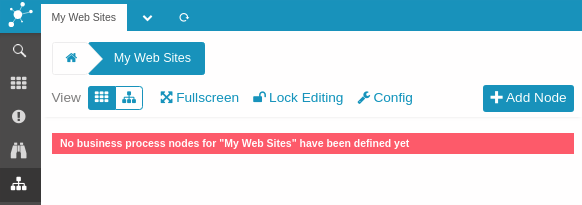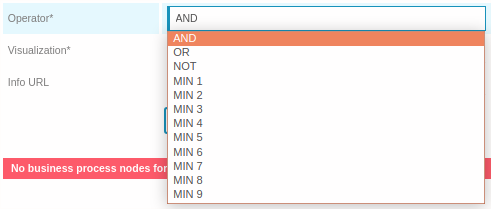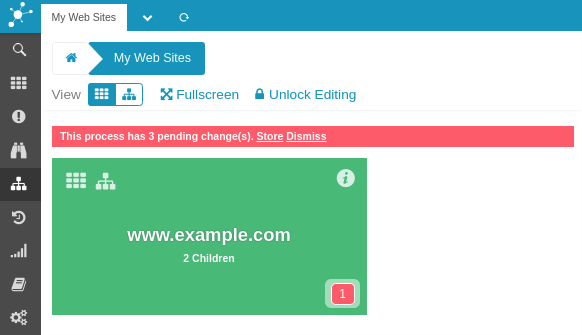Create your first Business Process Node¶
A Business Process Node consists of a name, title, an operator and one or more child nodes. It can be a Root Node, child node of other Business Process Nodes - or both.

Configuring our first node¶
To create our first Business Process Node we click the Add button. This leads to the related configuration form:

First setting is the Node name, an identifier that must be unique throughout all Nodes that are going to be defined. This identifier will be used in every link and also in Check Commands referring this node from an Icinga Service Check.
Set a title¶
As uniqueness sometimes leads to not-so-beautiful names, you are additionally allowed to specify a title. This is what the frontend is going to show:

Choose an operator¶
Every Business Process requires an Operator. This operator defines it’s behaviour, this specifies how it’s very own state is going to be calculated:

Specify where to display¶
The form suggests to create a Toplevel Process. It does so as we are about to create a new root node. We could alternatively also create a sub process. As we are currently not adding it to another Node, this would lead to an Unbound Node that could be linked later on.

Provide an optional Info URL¶
One might also want to provide a link to additional information related to a specific process. This could be instructions with more technical details or hints telling what should happen if outage occurs. You might not want to do so for every single Node, but it might come in handy for your most important (top level?) nodes:

That’s it, your are ready to submit the form.
First Business Process Node ready¶
You are now shown your first Business Process Node. A red bar reminds you that your pending changes have not been stored yet:

You could now Store the Configuration or move on with adding additional nodes to complete your configuration.
Hint: the blue arrow makes part of a breadcrumb showing your current position. You might want to learn more about breadcrumbs.